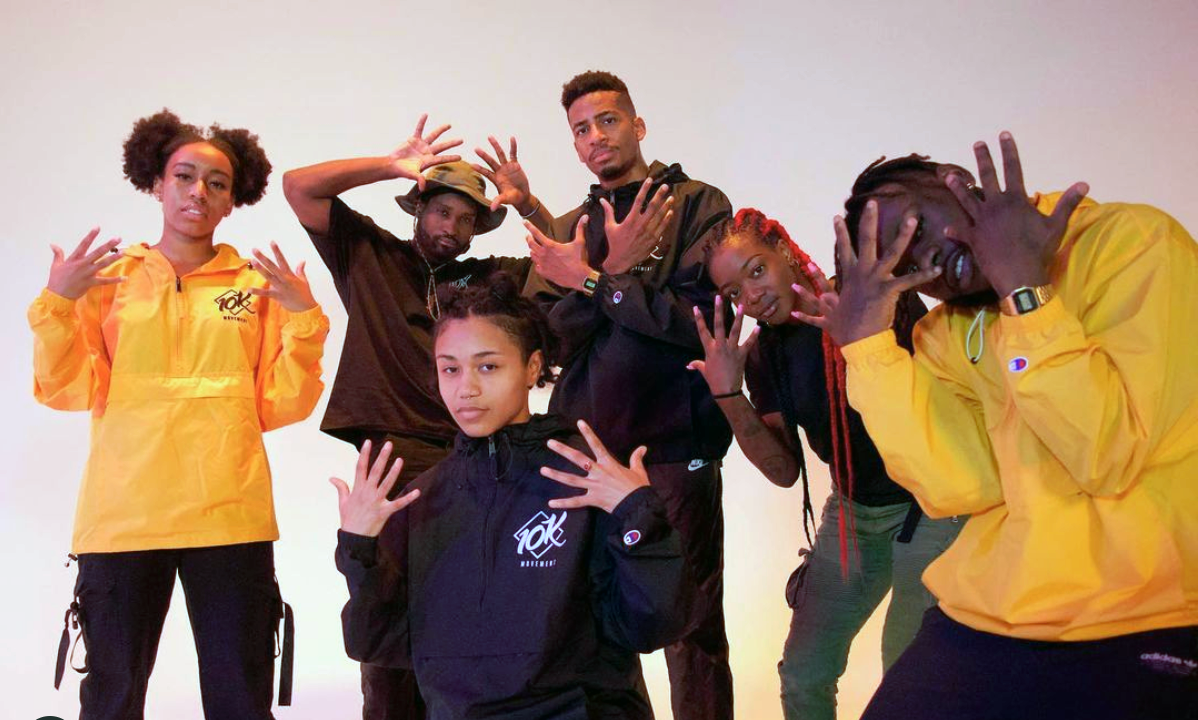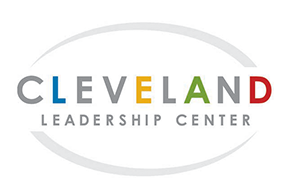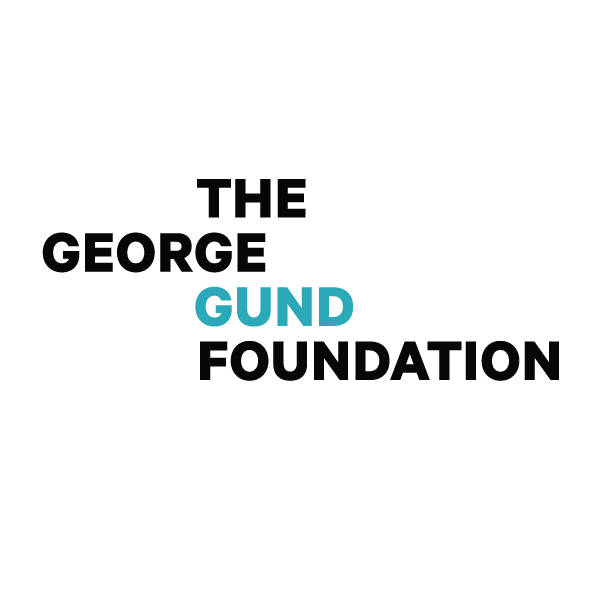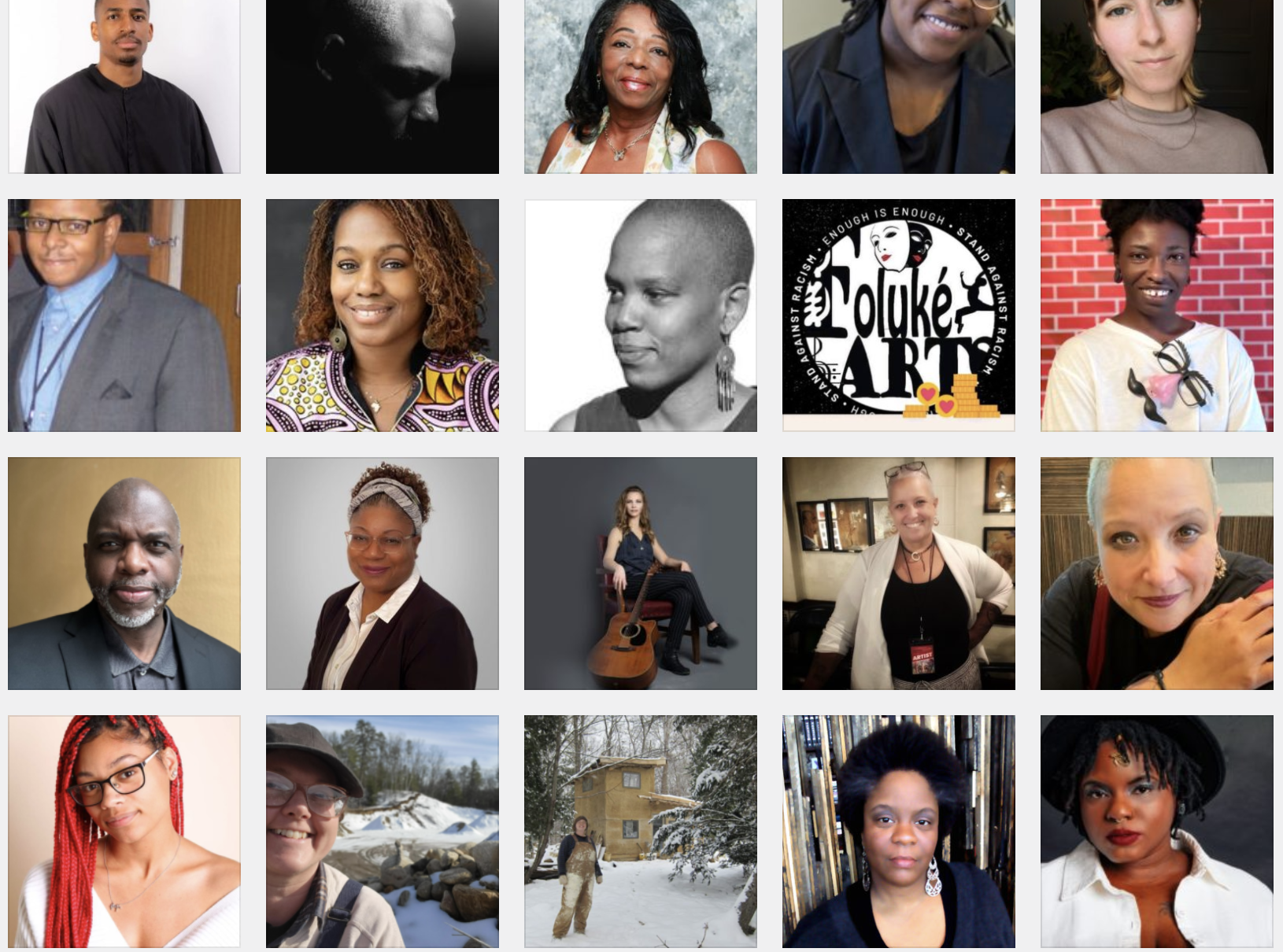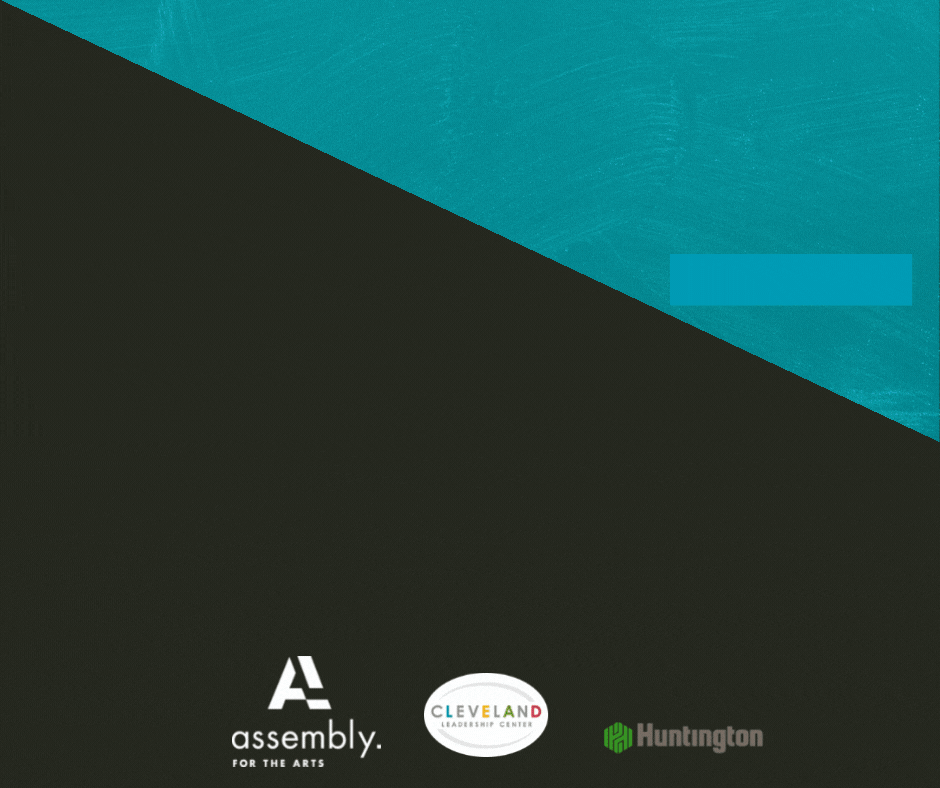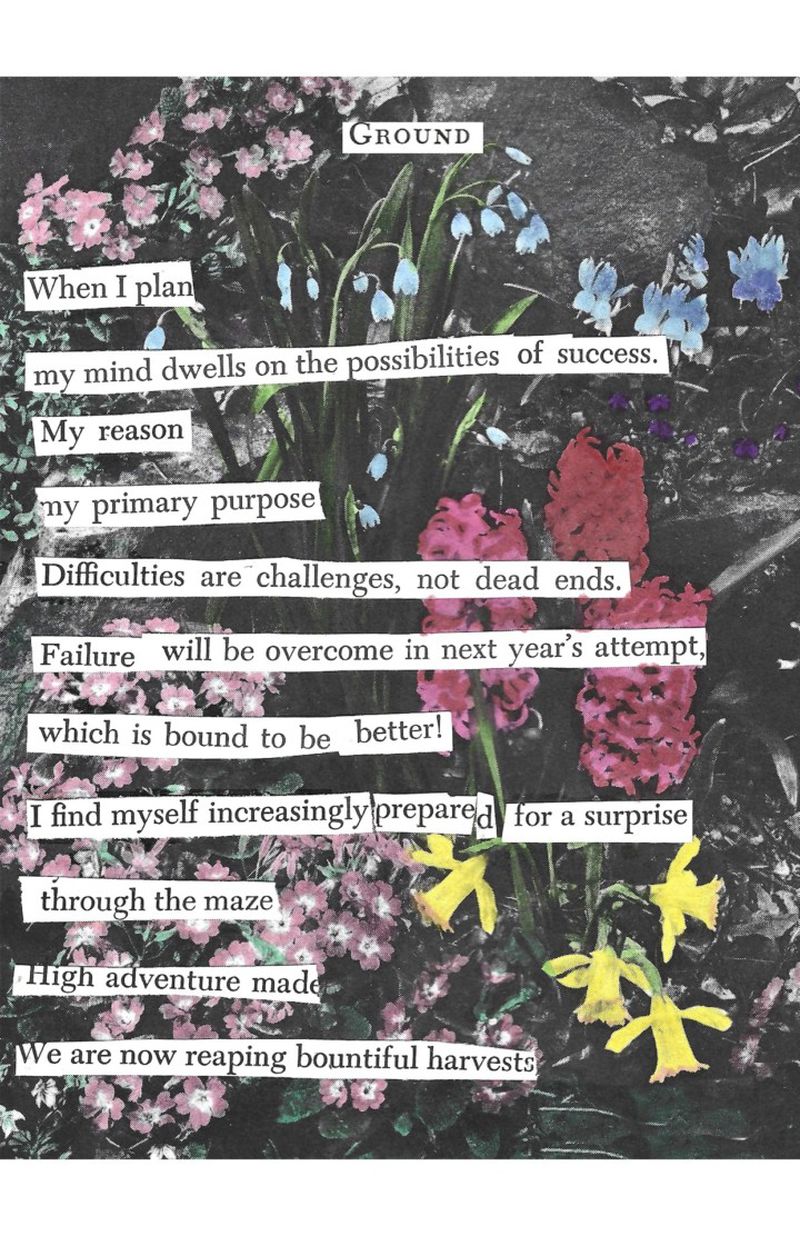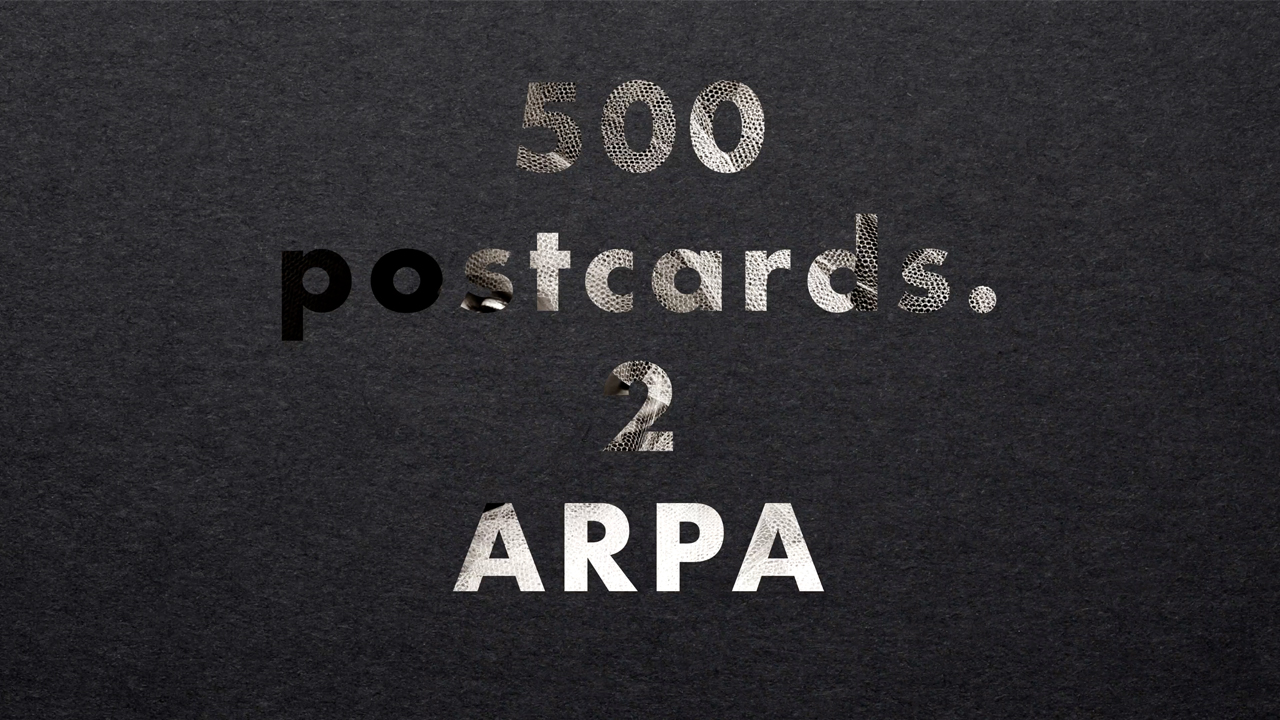New Arts Leadership Residency to Support Small Creative Businesses
June 15, 2022
CLEVELAND
A new type of residency for artists and arts entrepreneurs is accepting applications beginning June 15, 2022. Assembly for the Arts is partnering with the Cleveland Leadership Center (CLC) in developing the program development as part of Assembly’s Entrepreneur in Residence program powered by Huntington.
In keeping with Assembly’s mission, the program will be delivered through a Racial Equity lens and provide management support, coaching, and tools to a cohort of 20-25 artists and small- to mid-sized creative businesses. The announcement falls exactly one year after Assembly for the Arts was launched to expand the pie of resources and increase equity in and for Cleveland’s arts and culture sector.
Expanding on the model of traditional artist residencies, the Arts Leadership Residency offers a $1000 stipend and dedicated learning sessions to address a self-defined business goal or objective. Participants will have access to entrepreneurial expertise, mentorship from the CLC alumni network, and expertise of the other artists and small creative businesses participating in the program.
“Since launching Assembly, it has been clear that creative businesses, particularly those led by artists of color, have unique challenges that often do not have simple answers,” said Chinenye Nkemere, a Founding Board Member of Assembly. “This program will not only open access to resources and networks for BIPOC-led businesses, it will help all these artists and businesses build more inclusive practices and stronger business relationships across disciplines.”
Assembly partnered with CLC because of its track record of success in positioning leaders at all levels and stages of life to be catalysts for positive change and its longstanding commitment to ensuring racial equity is central to all its civic leadership programs.
“We are excited about this opportunity to apply our skills, networks, and understanding of the civic realm to a cutting-edge and laser-focused offering in the arts and culture sector,” said Marianne Crosley, CLC President and CEO. “We look forward to inspiring these arts leaders, connecting them to the community, and positioning them to be agents of positive change committed to advancing equity in our communities.”
“With this partnership, we are looking forward to offering artists the businesses some of the best expertise Cleveland has to offer, alongside some dedicated time and headspace so that they can grow and create solutions on their own terms,” agreed Jeremy Johnson, Assembly for the Arts President and CEO.
“This kind of work is precisely why we developed the Entrepreneur in Residence Powered by Huntington program,” said Carrie Carpenter, Huntington’s senior vice president, regional manager, corporate affairs and a founding board member of Assembly. “As a bank focused on making people’s lives better, helping businesses thrive, and strengthening the communities we serve, we want to empower businesses to grow responsibly and help Cleveland evolve to a place where financial strength is the norm in every neighborhood.”
The Arts Leadership Residency will take place over 6 months starting in late September 2022. 10-15 spaces are available for the first pilot group, which will be selected to ensure a wide range of artistic disciplines with a commitment to entrepreneurship and racial equity. Ten additional spots are reserved for Assembly’s fiscal sponsorship projects, and, in partnership with FRONT International, the artists selected for the Art Futures Fellowship.
Deadline to apply is July 15, 2022. Information and application is available on Assembly’s website https://assemblycle.org/arts-leadership-residency/
ABOUT
Assembly for the Arts is a 501(c)3 nonprofit organization with a focus on advocacy, cultural policy, racial equity initiatives, research, marketing that elevates the region, and services for nonprofits, artists, and creative businesses. It is governed by a volunteer board with a strong commitment to diversity and inclusion. Assembly by design operates in close partnership with Cuyahoga Arts & Culture, a government agency and Assembly for Action, a 501(c)4 political action nonprofit to serve the entire creative sector. www.assemblycle.org
Cleveland Leadership Center (CLC) provides collaborative leadership training, civic education and connections to leaders of all ages, empowering them to identify and take action on issues that resonate with them and positioning them to become change agents in the community. www.cleveleads.org
Entrepreneur in Residence powered by Huntington https://www.prnewswire.com/news-releases/huntington-bank-and-city-of-cleveland-announce-entrepreneurship-program-to-help-regions-small-businesses-grow-301468659.html
Media contacts:
- Valerie Schumacher, Assembly for the Arts, 216-575-0331, x128, valerie@assemblycle.org
- Michael Bennett, Cleveland Leadership Center, 216-592-2426, mbennett@cleveleads.org
Arts Leadership Residency
A DIFFERENT KIND OF RESIDENCY
Expanding on the model of traditional artist residencies, Assembly, in partnership with Cleveland Leadership Center (CLC), is offering 20-25 artists some headspace to plan for growth on their own terms. The Arts Leadership Residency offers a $1000 stipend and 6 dedicated learning sessions to address a self-defined business goal or objective. Participants will have access to entrepreneurial experts, mentorship from the CLC alumni network, and skillsets of the other artists and small creative businesses participating in the program.
In keeping with Assembly’s mission, the program will be delivered through a Racial Equity lens and provide management support, coaching, and tools to a cohort of 20-25 artists and small- to mid-sized creative businesses including both nonprofits and for-profits.
SCHEDULE
The Arts Leadership Residency includes half-day learning sessions, one Wednesday per month, from 8 a.m. – 12:30 p.m. Breakfast will be provided. Sessions will be in-person. Location and information regarding safety precautions will be provided to participants in advance.
- June 15: Application Opens
- July 15: Application Deadline
- August 31: Selections Made, Applicants Notified
- Session Dates (8 a.m. - 12:30 p.m.)
- Sept 28th: Opening Retreat
- Oct 19th: The Cleveland Ecosystem
- Nov 16th: Finance and Funding Landscape
- Dec 14th: Growing Customers and Donors
- Jan 18th: Equity and the Artistic Community
- Feb 15th: Taking Action
PARTNERS
Assembly is partnering with Cleveland Leadership Center (CLC) because of its track record of success in positioning leaders at all levels and stages of life to be catalysts for positive change and its longstanding commitment to ensuring racial equity is central to all its civic leadership programs. CLC provides collaborative leadership training, civic education and connections to leaders of all ages, empowering them to identify and take action on issues that resonate with them and positioning them to become change agents in the community.
The Arts Leadership Residency is part of the Entrepreneur in Residence program powered by Huntington, and is additionally supported by
The George W. Codrington Charitable Foundation, and
Meet the Arts Leaders of 2023
Applicant Info
Assembly for the Arts is committed to increasing equity in greater Cleveland’s arts and culture sector. We know that Black, Indigenous and other People of Color (BIPOC) often build creative careers without labeling themselves as artists or art businesses. We are committed to building a diverse and inclusive program, and we are most interested in finding the best candidates for the cohort. That may include creatives that are not often considered artists or who operate a less conventional business model. We strongly encourage you to apply, even if you don’t believe you meet every one of the qualifications described.
Residency participants were selected to ensure a wide range of artistic disciplines with a commitment to entrepreneurship and racial equity. The Residency Cohort includes 26 artists, cultural nonprofits, and creative businesses. Assembly’s fiscal sponsorship projects, and, in partnership with FRONT International, the artists selected for the Art Futures Fellowship received special invitations to participate in the inaugural program year.
Assembly for the Arts is partnering with the Cleveland Leadership Center (CLC) in the Arts Leadership Residency powered by Huntington through the Entrepreneur in Residence program.
City of Cleveland - Recommendations for an Arts-Inclusive City
The creative and cultural industries in Cleveland are a core part of our city’s success and vitality.
We define arts and culture in its broadest sense encompassing art forms ranging from traditional to contemporary. According to data from Creative Vitality Suite, in 2019, the City of Cleveland had 15,849 jobs by creative industries alone, generating $2.9b in sales within our local economy. While arts and culture drive economic growth and regional tourism, research also consistently reveals the positive influence the arts have on other sectors including education, healthcare, public safety, mental health, community revitalization and our region’s competitiveness in other markets.
Despite the facts, Cleveland is still one of the largest cities in the country that does not currently support or promote arts and culture in its government structure. A permanent infrastructure and City Arts and Culture Liaison with a clear set of goals and strategies, will allow our city to leverage the potential of our arts and cultural assets, as well as provide much–needed support and recognition for our creative workers. The mayor has publicly recognized the need for an arts-supportive infrastructure and we are confident this promise will be delivered on.
The following recommendations were developed with the arts and culture community, facilitated by Assembly for the Arts.
Create an Infrastructure in City Hall Dedicated to the Creative and Cultural Industries
Recommendations:
- Secure the right person for a cabinet-level position for arts and culture (see ROLES)
- Establish and work with an arts and culture community advisory group, comprised of individual artists and representatives of nonprofit organizations and creative businesses
- Recognize and leverage the work of current city staff dedicated to arts and culture. Establish an arts and culture line item in the administration’s budget to support the work outlined below
- Infuse arts and culture into the city’s committee structures and departments, such as community development, economic development, health and human services, public safety and education
Selecting an individual to lead these efforts within the administration will be critical. We recommend the establishment of an Arts and Culture Community Advisory group to supply necessary information about the local creative and cultural economy to aid the mayor in making informed decisions on potential candidates, as well as purpose and goal development for the Department of Cultural Affairs. To jumpstart this process, we recommend working with existing and established arts community coalitions including: Artist Bridge Coalition, Assembly for the Arts, Black Local Artists of Cleveland – Kuumba, Cleveland Arts Education Consortium, Collective Arts Network, National Independent Venue Association and Third Space Action Lab.
Budgeting will be equally important – developing a process to determine both the amount of available funding within the existing budget and how much will be needed to carry out the goals of the department is a necessary initial step.
Establish Purpose and Role of the Arts Infrastructure and Arts Liaison
The definition and title of the cabinet-level position will be important in setting the tone for the department and scope for which it will engage with, include and represent the community. Defining the department’s role(s) clearly will lay the groundwork for successful implementation of the Phase 4 work.
Recommendations: Select the best candidate
- Carefully consider the position title and how it will represent both community and city; consider traditional, non-traditional, contemporary and historic arts practices
- Ensure the candidate is deeply embedded and connected to the arts community
- Ensure the candidate has a strong understanding of DEI, BIPOC communities and Accessibility practices
- Ensure the candidate is equitable in their approach to the arts community
Recommendations: Define the Department’s Role
- Manage a coordinated effort to empower and promote the work of all Cleveland’s arts and culture stakeholders
- Oversee and manage the identity of Cleveland as an arts city
- Assist the mayor in developing an effective narrative about the power of the arts and their relationship to the city
- Coordinate and steward a downtown arts and culture district, which includes a cohesive and well-communicated programming agenda
Sanction and Execute a City Cultural Planning Process Driven by Cleveland’s Arts Communities
A key component of the newly developed city arts infrastructure will be the execution of a city-wide cultural planning process. This process will enable the city to identify needs, scope the landscape of the arts community and develop a set of strategies and tactics to support the arts community, leverage our creative and cultural assets and increase resident engagement with arts and culture.
Recommendations: Cultural Plan
- Establish a creative and cultural industry taskforce specified for this process
- Identify a research scope to launch the cultural plan process
![]()
1: Allocate ARPA funds to the arts and culture sector in 2022:
Allocating American Rescue Plan Act (ARPA) funds to creative businesses, nonprofits and individual artists across the City of Cleveland who have been devastated by the COVID-19 pandemic will act as both a substantive and symbolic effort in the new administration’s support of the creative and cultural economy. We recommend working with Assembly for the Arts and Cuyahoga Arts & Culture to bring this funding distribution to fruition.
2: Center Arts and Culture in Racial Equity and Inclusion and Other City-wide Planning by:
2a. Integrate arts and culture into city task forces addressing Racism as a Public Health Crisis
2b. Integrate arts and culture into efforts around improving internal city affairs processes including government policies contributing to the systemic racism, siloed departments, city staff communications and morale, slow response rates for residents and others
2c. Partner with arts and cultural groups to enhance public safety efforts
2e. Prioritize neighborhood cultural preservation
![]()
3: Expand the City’s Definition of Arts and Culture:
Cleveland’s arts and culture sector and creative industries represent a broad range of individuals, cultures, institutions, organizations, disciplines, events and experiences. Recognizing and understanding the contributions that all parts of the creative ecosystem make to our city’s vibrancy, economic development and overall progress will be key when developing an effective narrative of Cleveland as an arts-rich city
![]() 3a. Include individual artists, creative for-profit businesses and arts and culture nonprofits in the city department scope of work
3a. Include individual artists, creative for-profit businesses and arts and culture nonprofits in the city department scope of work
![]() 3b. Recognize an expanded range of creative disciplines in city-wide arts and culture planning decisions, including but not limited to craft, dance, design, film, literature, media, music, performance, theatre and visual arts
3b. Recognize an expanded range of creative disciplines in city-wide arts and culture planning decisions, including but not limited to craft, dance, design, film, literature, media, music, performance, theatre and visual arts
4: Develop a Cohesive Multi-Disciplinary Arts Programming Agenda including:
4a. Establish a City of Cleveland Artist in Residence program
4b. Sustain public art programming including funding for the established Mural My Neighborhood program
![]() 4c. Support BIPOC Creative workers through commissions, grants and fellowships
4c. Support BIPOC Creative workers through commissions, grants and fellowships
4d. Build a cohesive arts events communication structure. Continue and build upon arts programming from the prior administration
5: Elevate and Protect Creative Workers Driving Neighborhood Development:
The arts and culture communities have been core partners in the successful redevelopment of Cleveland’s most notable destination neighborhoods like Tremont, Gordon Square, and the Waterloo Arts District. Artists and creative businesses are often the driving forces and pioneers for these redevelopment efforts. We recommend a coordinated effort to mitigate gentrification and the displacement of the creative people and businesses in these and other developing areas.
5a. Work within community development programs and policies to extend support to artists and creative businesses
5b. Invest in arts spaces for necessary accessibility-related infrastructure updates
5c. consider a reduced tax rate for the sale of artwork and tax abatements for renovation
5d. Consider piloting programs to standardize wages and guarantee basic income for creative workers
5e. Address the admissions tax for small and mid-size music venues
5f. Reduce restrictive permitting and lessen bureaucracy for events, such as outdoor arts events, busking, and other publicly restricted arts activities
6: Work Closely with CMSD to Enhance Arts Education:
The Cleveland Metropolitan School District (CMSD) has committed $32M for Year 1 of a District-wide Arts Plan for K-12 students. We recommend the administration support the continuation of this new plan:
6a. Partner with CMSD’s Director of Arts Education and the Cleveland Arts Education Consortium
6b. Communicate with large and small arts organizations providing school programming to understand needs
6c. Support safe and equitable student access to these arts programs during out of school time
6d. Support the District’s tech needs and purchase of visual art supplies and musical instruments
7: Brand Cleveland as an Arts City:
7a. Partner with Destination Cleveland and Assembly for the Arts to expand and better define arts promotion
7b. Include arts and culture prominently on the City’s website
7c. Promote a developed narrative that speaks to the power of arts and culture and its importance within the city and across sectors
The following items are recommended as priority goals for the City Arts and Culture Liaison and corresponding staff structure.
Quarterly Assemblies
2025 Assemblies
- March 26, 11:30a-1p: The Power of Arts Advocacy
- June 25, 6-7:30p: Affirming Arts and Culture for All
- August 27, 11:30a-1p: Stable Grounds for Culture Bearers
- December 10, 6-7:30p: Putting Arts On the Map
Quarterly meetings are $15 and include a lunch or dinner. Members attend for free; login before you register. Topics of each Assembly vary as we shift direction, services, advocacy, and organizational output to meet community needs.
With a vision of ensuring that everyone benefits from a diverse and equitable arts and culture sector, we invite the people of Greater Cleveland to assemble for our quarterly state of the arts.
About Quarterly Assemblies
Stay up to date on the most recent creative-industry-wide information over a meal and good company. Each quarter, we share updates on industry data trends, public policy, artist funding, racial equity initiatives, and more. As Assembly continues its work to expand resources and increase equity in Cleveland’s arts and culture scene, weigh-in on what you’d like to see. Share your voice and join the discussion by offering feedback. This event is for anyone, whether you work directly or indirectly with the arts industry. Attendees typically include artists, arts administrators, creative businesses, public officials, and anyone interested in connecting with the arts and cultural industries.
Sign up for the Cadence to get receive updates as we approach the date.
And as always, if you have time after the discussion, stick around with us and continue networking with the amazing folks in our creative fields.
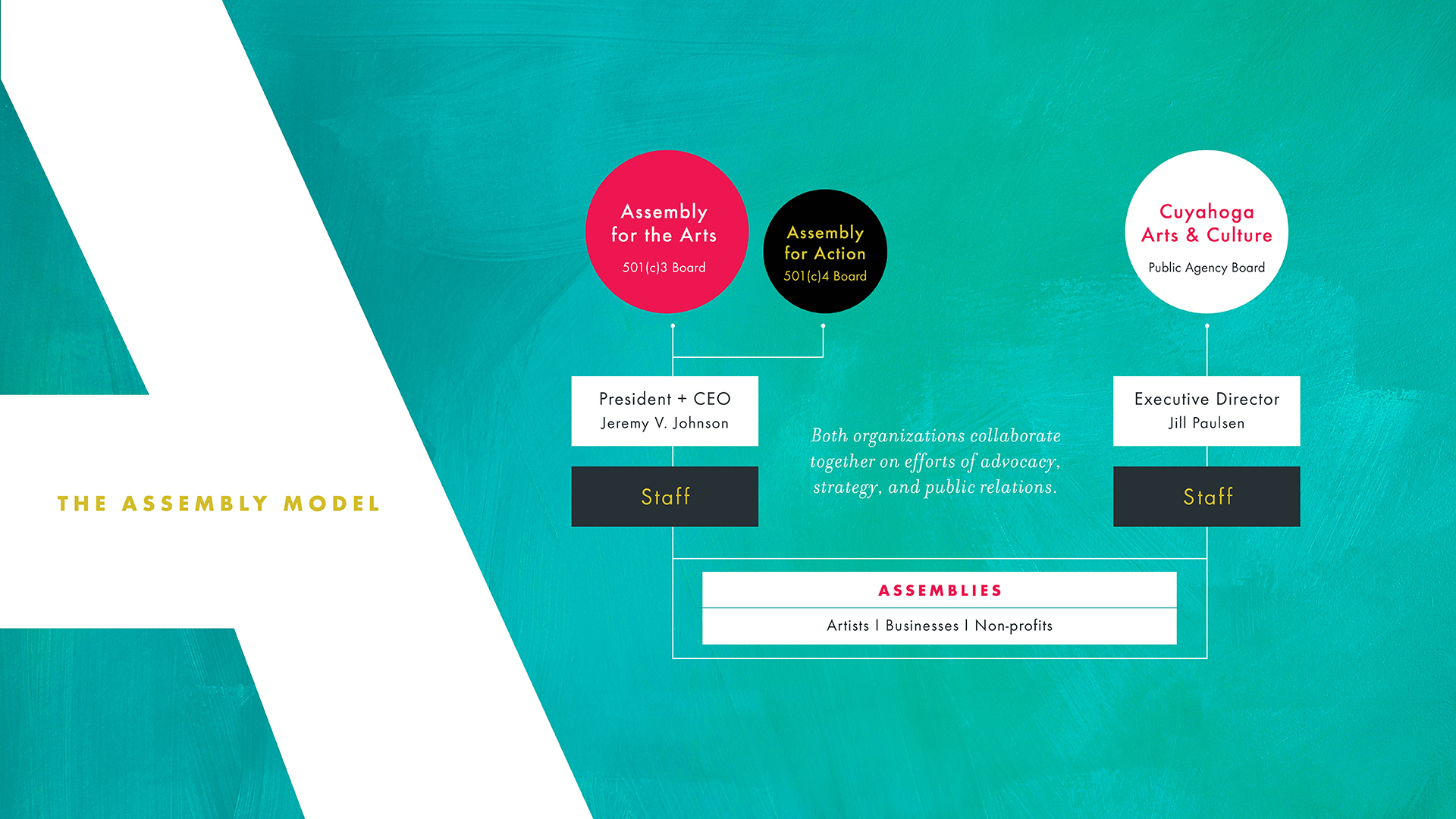
ARPA Funding Program
Funding Status Notifications were emailed on November 8, 2022 to all applicants of the Cuyahoga ARPA for Arts program through Assembly for the Arts.
Notifications were sent to the email address provided in your application. Be sure to check your spam and junk email folders.
If you submitted an application and have not received a Funding Status Notification, please contact arpa@assemblycle.org
If you received your Funding Status Notification and have questions about receiving your relief funds, please carefully review the materials included in your award email. If your questions are still unanswered, please email arpa@assemblycle.org. Due to the influx of inquiries and attention to detail required to process funds responsibly, staff will not be returning phone calls unless immediate action is required.
Notes about receiving your ARPA relief funds
Watch this video to walk through completing forms and BILL.com.
Complete Your Forms
All artists and businesses receiving funds must complete and submit a W-9 form to process their payment. You can do this one of two ways:
-
- Electronically (easiest): Use the DocuSign link in your award email.
- Print and mail in a complete W-9 form to: Assembly for the Arts, 1900 Superior Ave., Suite 130, Cleveland, OH 44114
Direct Deposit
- Your ARPA funds can be received through direct deposit (ACH)
- You must either complete the ACH Form or disable the form included with your electronic W-9 to move to the next payment step. To disable the form, click the Opt-out button at the bottom of the direct deposit instructions page.
- All ARPA funds recipients will receive an email invite through Bill.com to process your payment as a direct deposit. PLEASE NOTE – you will not receive this invite until Assembly has your completed W-9 form
Other Options
- You can choose to submit your W-9 by mail (see address above) and receive a paper check.
- All paper checks will be processed after direct deposit payments
- Paper checks can take up to two weeks to reach you, after Assembly has received and processed your complete and accurate W-9 by mail
Applications are now closed
The deadline to apply for these funds was September 30, 2022
Frequently Asked Questions (FAQ)
I applied but can’t find my funding notification email. Where is it?
All applicants of the Cuyahoga ARPA for Arts program were emailed a final funding status update on November 8, 2022 from Assembly. These notifications were sent to the email address you supplied in your application. If you’re unable to locate your email notification, please be sure to check your spam, junk and promotions folders. You can also search “ARPA” or “Assembly” in your email search bar. All notifications came from arpa@assemblycle.org.
I don’t have any checks. How do I include a voided check with my ACH form?
If you do not have any checks, please take a screenshot of your banking routing number and account number from your banking mobile app. You can also request starter checks from your bank, most banks will give those out for free.
If you’re still having trouble, please Disable the ACH form using the button at the bottom of the direct deposit instructions page included with your DocuSign forms.
I submitted my DocuSign documents. Did Assembly receive them?
If you were able to complete, electronically sign and click the submit button, your documents were successfully submitted! If you saw a pop-up confirmation when you clicked Submit, you’re all set. You may not receive a DocuSign confirmation email, but do not worry, it is likely your documents were still received successfully.
Please do not contact Assembly offices for a document receipt confirmation or submit a second DocuSign packet. Doing so will delay your payment. An Assembly team member will reach out to you directly if there is an issue with your payment information. So no news from Assembly is good news.
I submitted my DocuSign documents. Where’s my invite from Bill.com?
Please hang tight. Within approximately 7-10 business days your W-9 will be processed. Once processed, you will receive an email from Bill.com inviting you to create an account. All Bill .com invites will come from Bill. com, not Assembly. Please DO NOT create a Bill .com account without having received this invitation. Getting an auto-reply email from Assembly after emailing ARPA @assemblycle.org is not an invitation to Bill .com. Please monitor your inbox carefully.
Please also keep in mind that Assembly is a small staff and is processing hundreds of W-9s; Bill.com invites will be sent on a rolling basis as all applicant paperwork is processed.
When will I receive my ARPA funds?
Funding distribution timing will vary depending on when your payment information is received and processed. Please do not call Assembly offices to inquire about disbursement timing.
ARPA payments will be disbursed on a rolling basis depending on when your information is received and processed. We are working hard to ensure that all payments go out as quickly as possible.
When should I contact Assembly about ARPA?
If you have not received a Bill .com invite or further information to process your payment by December 1, 2022, email arpa@assemblycle.org. If you have not received your ARPA funds disbursement by December 15, 2022, please email us at the address above.
If you are having tech difficulties with any platform or require assistance due to a disability, please contact arpa@assemblycle.org.
About Rescue Funds
On March 28th, Cuyahoga County Executive, Armond Budish announced that $3.3 million in American Rescue Plan Act (ARPA) funds have been dedicated to arts and culture .
Assembly for the Arts and Cuyahoga Arts & Culture partnered to distribute these dollars directly to the community through special relief funding programs for nonprofit organizations, individual artists and creative businesses. You can still Tweet, email and thank your County reps for their support and consideration.
Assembly will distribute $1.65 million of these funds to Artists and Creative For-Profit Businesses. Nonprofit Organizations were invited to apply for funds through Cuyahoga Arts & Culture. Visit CAC’s website for more information on their ARPA funding program.
Cuyahoga County to Award $3.3 Million in American Rescue Plan Act Funds to Cuyahoga Arts & Culture and Assembly for the Arts
Cuyahoga County to Award $3.3 Million in American Rescue Plan Act Funds to Cuyahoga Arts & Culture and Assembly for the Arts
Funds will be distributed to support arts nonprofits, creative workers, and for-profit creative businesses
CLEVELAND (March 28, 2022) – Cuyahoga County has proposed an allocation of $3.3 million in American Rescue Plan Act funds to help bolster the creative economy, County Executive Armond Budish and County Council President Pernel Jones, Jr. announced today.
The relief funding was secured through a collaborative effort of Cuyahoga Arts & Culture (CAC) and Assembly for the Arts. Following approval by County Council, funds will be evenly divided between CAC and Assembly for the Arts. CAC will develop guidelines for distribution to eligible CAC nonprofit grant recipients that have a primary mission of arts and culture. Assembly will similarly develop guidelines for distribution to arts-related small businesses and creative workers.
“The economic vitality of our region depends on the revival of creative workers–individual artists, cultural nonprofits and for-profit cultural businesses. The County’s investment will help bring us back from historic losses. We thank the County Executive and County Council for channeling resources to strengthen the creative sector. As we have seen with prior investments in arts and culture organizations, each dollar invested increases the size of the overall pie” said Jeremy Johnson, president of Assembly for the Arts.
CAC’s Executive Director Jill M. Paulsen said the funding is critically important to the hard-hit arts and culture sector in the county. A CAC report on the impact of COVID on the nonprofit arts sector in the county shows 65 organizations that receive support from CAC have lost $171 million in revenue and more than 5,000 workers have been laid off, furloughed, or faced reduced hours since March 2020. Prior to the pandemic, the creative economy in the Cleveland MSA generated $9.1 billion annually.
“The creative economy is core to the identity of Cuyahoga County, and it has been slower than other industries to begin to recover from the pandemic. We appreciate County Executive Budish, County Council President Jones and other leadership at the county for recognizing the importance of arts and culture and for understanding the needs of nonprofit organizations of all sizes,” Paulsen said. “Every bit of funding helps nonprofits arts organizations recover so they can serve the community well into the future.”
Cleveland artists ask for a portion of ARPA funds from city council in a colorful way: postcards
Source: News 5 Cleveland
Abstract:
CLEVELAND — You’ll find no shortage of art from Cleveland’s West Side to its East Side, it enriches thoroughfares and fills the seats in local theaters. Painters, photographers, poets and performers showed up at Cleveland City Council’s meeting to tell city leaders that they need help and funds from the American Rescue Plan Act (ARPA).
Assembly for the Arts plans Cleveland City Hall rally advocating for $10M in federal COVID relief for the arts
Source: Cleveland.com
Abstract:
CLEVELAND, Ohio – The Assembly for the Arts, the nonprofit umbrella group for Cleveland’s nonprofit and for-profit cultural industries, is pushing City Council to allocate $10 million of the city’s $511 million in federal COVID relief money to the arts.
They planned to deliver more than 500 artist-designed postcards representing constituents from across the city’s 17 wards during a Monday evening rally at City Hall.
Cleveland artists lobby for ARPA relief funds with postcard campaign
Source: Ideastream
Abstract:
Cleveland-area artists plan to rally on the steps of City Hall Monday. This group of painters, photographers and others are using their skills to convince officials to allocate federal pandemic relief funds to support the arts.
The advocacy organization Assembly for the Arts tapped the talents of local artists to produce a series of postcards, each bearing an illustration and making the case for a $10 million share of the city’s $511 million allotment of funds from the American Rescue Plan Act (ARPA).
ASSEMBLE at City Hall
OVERVIEW
Thank you to all who helped make our Artists for ARPA campaign possible these past few weeks. We’ve made amazing progress in such a short amount of time! We’re gathering, one last time before the vote, in front of City Hall on Monday, March 28th at 6:30 PM in support of allocating 2% of ARPA funds for the arts. We invite you as well as all of our creative Clevelanders and supporters of the arts to ASSEMBLE with us. We would love to see you there!
WHO
- Artists
- Non-profit professionals
- Creative business professionals
- Arts & culture advocates
WHAT
Rally in support of Artists for ARPA
WHEN
Monday, March 28th at 6:30 PM

